The great artist recluse and his 78 missing paintings
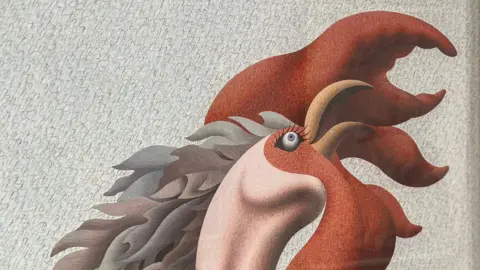
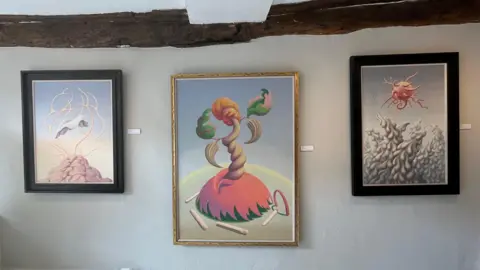
In his younger years, Henry Orlik once had work hung alongside masters such as Salvador Dalí. After more than 40 years away, he has recently come back into the spotlight as a mystery surrounds 78 missing artworks.
For decades the reclusive artist worked away in a housing association flat, stacking and rolling up canvases and drawings.
But the body of work of 77-year-old Henry Orlik, who now lives in Swindon, is far smaller than it should be.
A large chunk went missing while he was in hospital in 2022 following a stroke, and have never been found.
Without his full portfolio of paintings, it is tricky for Orlik to know the full value of the ones he does have left.
But his dream-like paintings have brought tears to the eyes of art dealers, with one describing him as "one of Britain's greats".
"I've had a 38-year career in the art world and I feel these are just exceptional," said Grant Ford from his gallery in Marlborough, Wiltshire.
Mr Ford, who has been showing Orlik's work for the first time since the 1980s, was a specialist at the world famous Sotheby’s auction house for 30 years.
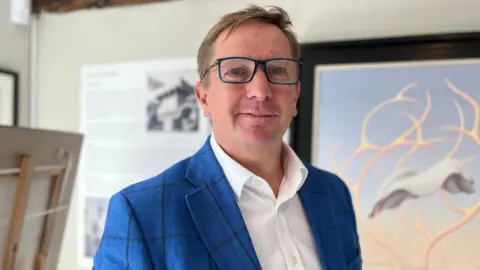
Mr Ford was contacted by a solicitor trying to help Orlik, who can no longer pick up a brush after the stroke, find his 78 missing paintings.
He also wanted Mr Ford to value those that were left.
"This artist, who I really didn't know about a few months ago, should be considered one of our greats," Mr Ford said.
"I just haven't seen anything like this before. I think they're just mind-bogglingly good."
Orlik did have some work exhibited alongside the likes of Dali in the 1970s, but became reclusive in the 1980s after becoming disillusioned with the commercial art world.
For expert Mr Ford though, he could not value Orlik’s work without selling a few first.
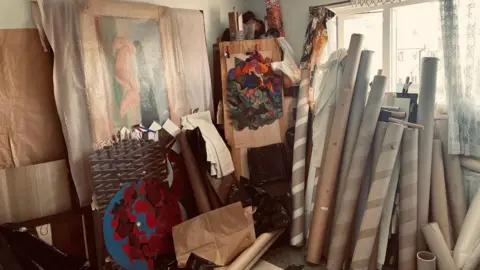 Winsor Birch
Winsor BirchThat is where Orlik's childhood family friend, Jan Pietruska, stepped in to help.
Mr Pietruska explained that it was while Orlik was in hospital, that he was evicted from his housing association flat, which was in London.
Its contents were cleared, but it is not known where they went.
As a result, valuing what is left has been essential to understanding what has been lost.
Originally of Polish descent, Orlik came to the UK with his parents in 1948, where they were in various resettlement camps until they moved to Swindon.
Orlik now lives in his late mother's house in the town where he is cared for, but struggles to speak.
Over the years, he had fortunately also stored many pieces there.
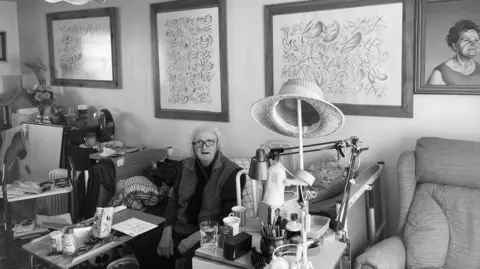 Winsor Birch
Winsor BirchMr Pietruska started to go through the mass of art, providing pieces for exhibitions in London and Wiltshire.
"I started unravelling these, so I took them to the Polish community centre here, because they had a large dance floor," he explained.
"I photographed them all and started recording, numbering them, naming them and then put them into tubes."
When Mr Ford got some to London for the first exhibition this year, about 30 works made £400,000 - the majority selling before the doors fully opened to the public – and fetching between £5,000 and £40,000 each.
The second exhibition at The Little Gallery in Marlborough had online punters bidding tens of thousands of pounds.
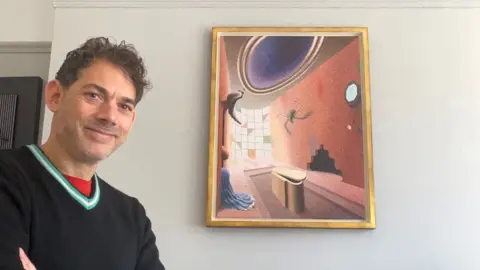 James Clifford
James CliffordOne of the buyers was James Clifford who runs a logistics company by day, but is an avid art fan in his spare time.
When he read about Orlik via an art update email, he zoomed across London on his moped to the gallery and persuaded them to let him in before it opened to the public.
Despite getting in early, he found the ground floor of the gallery was already a "sea of red dots" on the labels of the paintings.
They had already been sold.
"I just saw the first few - my jaw totally dropped. I just thought this was some of the most extraordinary work I'd seen," he said.
He was determined to have one for himself, so made an impulse purchase - one he said he does not regret at all.
"The skill level is amongst the best artistry I've seen," he said.
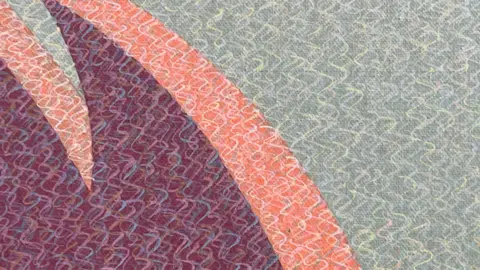
For the untrained eye, the first thing you might notice about Orlik's work is how precise it all is. Some of it feels quite science-fiction.
Mr Ford explained that Orlik has always had a strong interest in physics, and it shows.
He uses tiny squiggles on the paintings that make up the colours, which he calls "excitations”.
Friend Mr Pietruska said to create the effect, Orlik would sometimes use just a couple of hairs on a paintbrush at a time on each one, which could take huge amounts of time.
First training at the Swindon College of Art as a contemporary of Gilbert O'Sullivan and Virgin Atlantic logo designer Ken White, Orlik also went to Cheltenham School of Art.
Mr Pietruska is glad his friend is finally getting recognition.
"It's just a little old Swindon fella who's made really good,” he said.
"I'm happy to be able to see that I've been able to discover these things."
But for all the skill on display, dozens of his pieces of work vanished in a key period while he was in hospital.
The hunt begins to attempt to track down what might have happened to them.
Follow BBC Wiltshire on Facebook, X and Instagram. Send your story ideas to us on email or via WhatsApp on 0800 313 4630.
